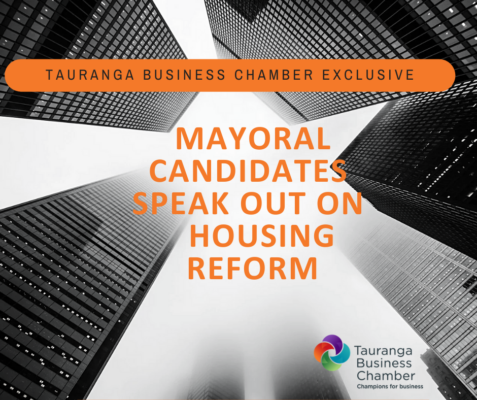Friday, May 21 marks an annual movement to help stop bullying.
Celebrated annually around the globe, Pink Shirt Day began in Canada in 2007 when two students took a stand against homophobic bullying, after a peer was bullied for wearing a pink shirt.
In Aotearoa, Pink Shirt Day works to create schools, workplaces, communities and whānau where everyone feels safe, valued and respected.
Did you know, research says about 15% of employees on a global basis are exposed to some form of workplace bullying?
Workplace bullying is recognised as a health and safety risk, and is defined by WorkSafe’s guidelines for preventing and responding to bullying at work as, “Repeated and unreasonable behaviour directed towards a worker or a group of workers that can lead to physical or psychological harm”.
In conjunction with the Pink Shirt Day awareness campaign, we’ve asked two of our Chamber Members to provide some advice around workplace bullying to help you, as an employer or employee, reduce harmful speech or actions in your workplace.
From an HR point of view: Top tips from Ciska Vogelzang, Avisa Services Ltd.
Why do we have workplace bullying?
The literature shows two possible explanations
- the workplace hypothesis which states that bullying is the result of job design and social environment in organisations. For example, workload and job insecurity increase the risk of workplace bullying
- the individual disposition hypothesis that states that some individual characteristics can lead to bullying behaviour.
The research suggest we should look at these is conjunction, not separate.
What does workplace bullying look like? What are some of the types of workplace bullying people can experience?
Bullying can be physical, verbal or relational/social and can also be done through email, text messaging, internet chat rooms or other social media channels. Common bullying behaviours fit in two main categories:
- attacks that are direct and personal such as ignoring or isolating, attacking a persons’ belief or lifestyle preference, being yelled at, persistent public criticism, suggestive glances or gestures, ganging up, excluding from a peer group and/or spreading rumours.
- indirect and task-related such as being giving unachievable tasks (impossible deadlines or unmanageable workloads) withholding information, constant criticism of work, unreasonable monitoring, lack of role.
What effects can bullying have one someone’s mental or physical wellbeing? What about the effects on people around them?
Workplace bullying has been linked to numerous physical and psychological symptoms such as headaches, chronic neck pain, fibromyalgia, sleep problems, post-traumatic stress symptoms and suicidal ideation.
How is workplace bullying related to work outcomes?
People that are bullied are more likely to have negative work-related responses such as reduced commitment to work, feeling dissatisfied with their work, experience job insecurity, a high rate of absenteeism and being on sick leave. It can also increase staff turnover, impact productivity and profit, damage an organisation’s reputation and can lead to a staff member taking action against an employer.
How can an employer or employees help create an environment that doesn’t allow bullying to become common place?
An employer can create a culture in the workplace where bullying is simply not something ‘we do around here’ and by effectively dealing with it if it does occur.
Businesses can, for example, have a Code of Conduct (that describes expected behaviours and what serious misconduct is), promote good work relationships by modelling being open and transparent, manage work and workloads plus recognise and promote diversity.
Also, developing good managers who understand and call out unreasonable behaviours, educating all employees on bullying behaviours and having a anti bullying/ complaints procedure in place.

From a legal point of view: Top tips from Trudy Marshall, Employment Lawyers Tauranga.
What are an employee’s rights when it comes to workplace bullying – either from a co-worker or from their boss?
- An employee who believes he/she is the victim of bullying by a colleague can make a complaint to the employer.
- If the boss is carrying out the bullying behaviour and there is someone in the workplace more senior than that boss, then the employee can make a complaint to the more senior person.
- If there is no-one more senior, the employee may decide to make the complaint directly to the boss or to raise and pursue a personal grievance.
- In any case, if the workplace has a relevant complaint policy or procedure, the employee should also comply with that. Sometimes informal steps which fall short of a complaint can also be appropriate. Each case is fact dependent and it depends on the type and seriousness of the bullying behaviour.
What should a manager / leader/ business owner do if they identify bullying in the workplace?
Any potential bullying should be investigated in a fair and neutral manner in accordance with the principles of natural justice and any relevant workplace policy or procedure. Both the complainant and the person complained about have the right to be treated in this manner.
If, following the investigation, the bullying is upheld, then the manager/leader/business owner must decide how to address that behaviour. Depending on the seriousness, this could include formal disciplinary investigation and outcomes.
What steps often occur once someone has reported workplace bullying?
Initial consideration needs to be given to any steps that need to be taken to keep both the complainant and the person complained about safe while the investigation is carried out. Such steps can include having the parties work separately or having a third person present for any face-to-face communications between the complainant and the person complained about.
What are some of the main challenges, from a legal point of view, when it comes to identifying and reporting workplace bullying?
One challenge is being fair to both the complainant and the person being complained about as there are usually ‘two sides to every story’. Another challenge is identifying whether the behaviour complained about amounts to bullying or to reasonable workplace conduct.
The WorkSafe Guidelines referred to above state that bullying is not:
- One-off or occasional instances of forgetfulness, rudeness or tactlessness;
- Setting high performance standards;
- Constructive feedback and legitimate advice or peer review;
- A manager requiring reasonable verbal or written work instructions to be carried out;
- Warning or disciplining workers in line with any code of conduct;
- Reasonable management actions delivered in a reasonable way;
- Differences in opinion or personality clashes that do not escalate into bullying, harassment or violence.
If you require further support, resources or guidelines, visit WorkSafe’s website to access their toolkit for businesses. Click here to visit now.

















































